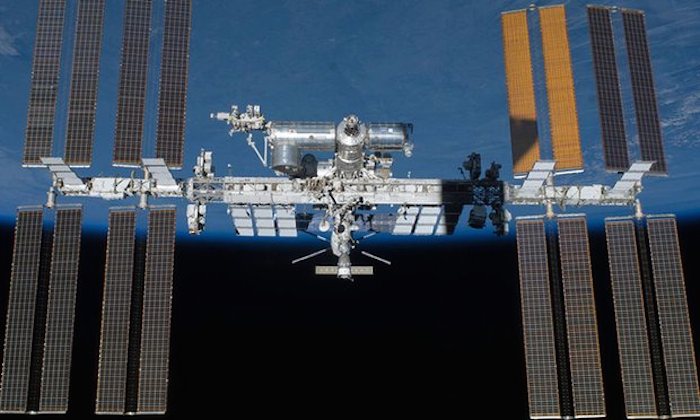.

It's 100,000 laps around Earth and counting for the International Space Station.
The space station reached the orbital milestone — 17 ½ years in the making — Monday morning. NASA said these 100,000 orbits are akin to traveling more than 2.6 billion miles. That's equivalent to 10 round trips to Mars, or almost one way to Neptune.
Each orbit takes about 90 minutes; 16 orbits comprise a station day.
Astronauts have been living continuously aboard the 250-mile-high complex since 2000. Construction began two years before that. Since then, 222 people have lived or visited there, the vast majority of them— 189 — men, according to NASA. Altogether, there have been 47 permanent crews representing the U.S., Russian, Canadian, Japanese and European space agencies.
Two Americans, three Russians and one Englishman currently call the space station home. They recently achieved a photographic milestone, snapping the 3 millionth picture taken over the years from the scientific outpost.
"One-hundred-thousand orbits, the journey continues," NASA astronaut Jeffrey Williams said in a celebratory video from space.
Quelle: abc news
---
Update:
.
International Space Station makes 100,000th circuit around Earth
The International Space Station started functioning with the launch of the Russian functional freight module Zarya, which took place on November 20, 1998
The International Space Station (ISS) made its 100,000th circuit around the Earth on Monday morning, Russia’s Mission Control Head Maxim Matyushin told TASS.
"The ISS is proving by its so long existence that humankind has the necessary technologies for constant presence in orbit and that we have potential for further exploring the outer space," said Matyushin, who is also deputy general director of TsNIIMASh (the Central Research Institute of Machine-Building), the lead research institute of Russia’s State Space Corporation Roscosmos.
According to Russia’s Mission Control, the jubilee circuit of the world’s sole orbiter around the Earth lasted from 7:35 to 9:10 Moscow time (4:35 - 6:10 GMT).
The International Space Station started functioning with the launch of the Russian functional freight module Zarya, which took place on November 20, 1998.
The world’s sole orbiter currently consists of 15 purposeful modules and is the largest engineering structure assembled by humans in the Earth’s orbit. The ISS weighs over 400 tons and by its size it can fully cover a football field in its projection. The ISS’ average flight height is about 400 km and the station makes a full circuit around the Earth within an hour and a half.
Quelle: TASS
4473 Views
